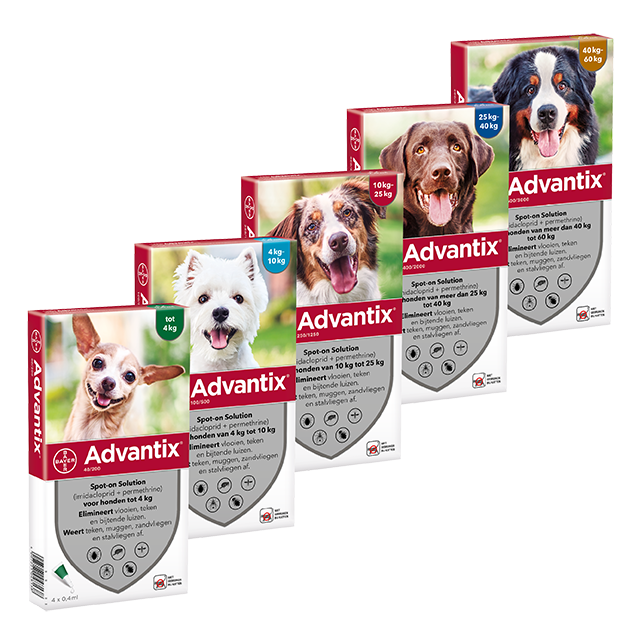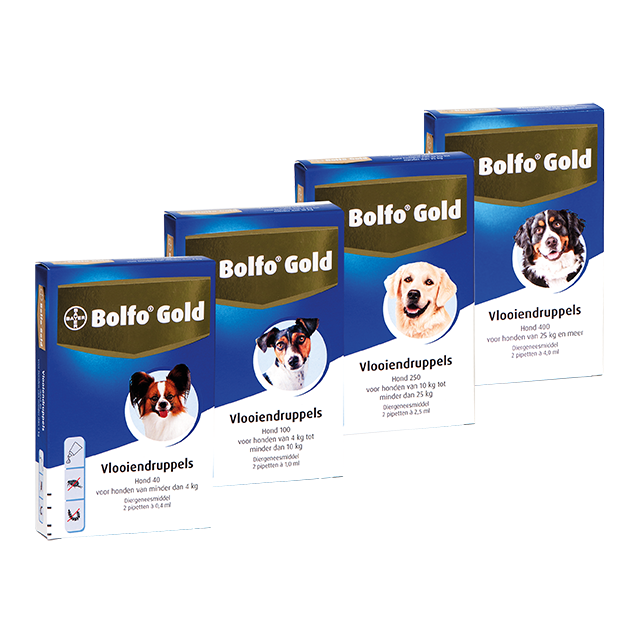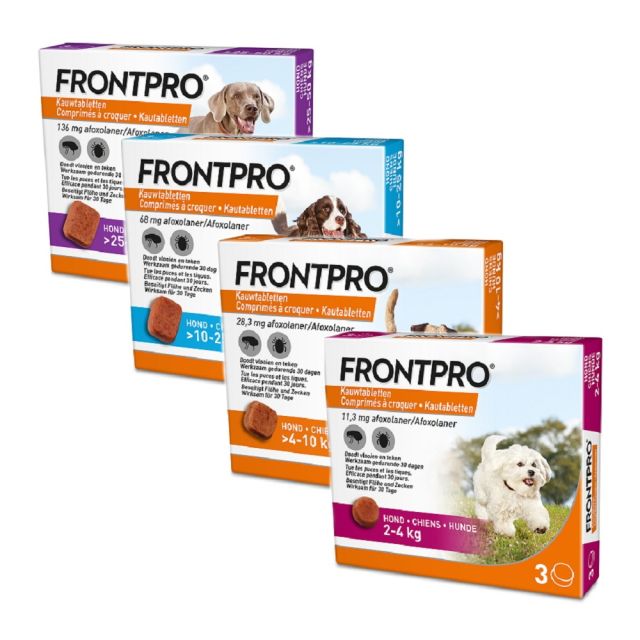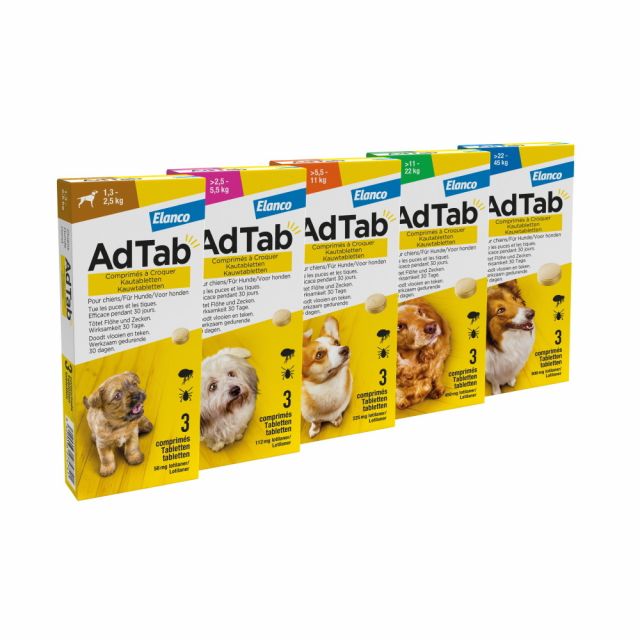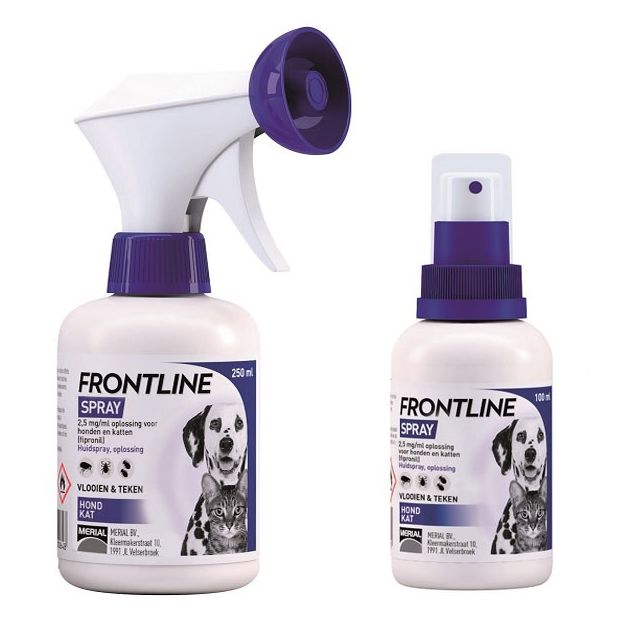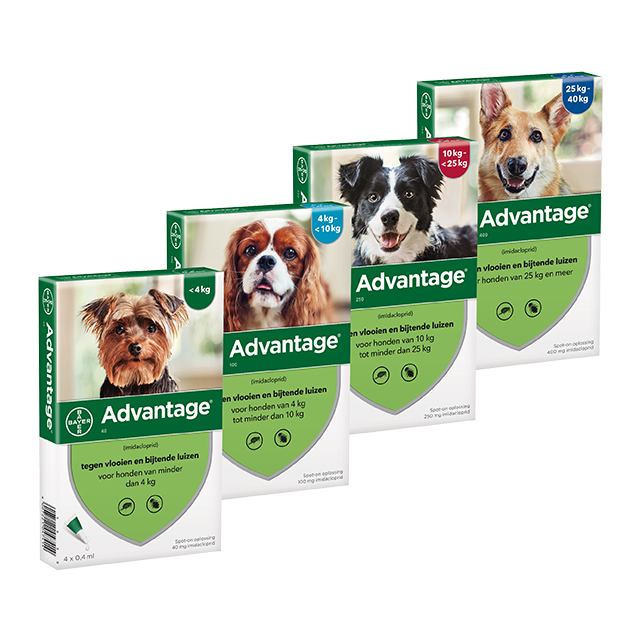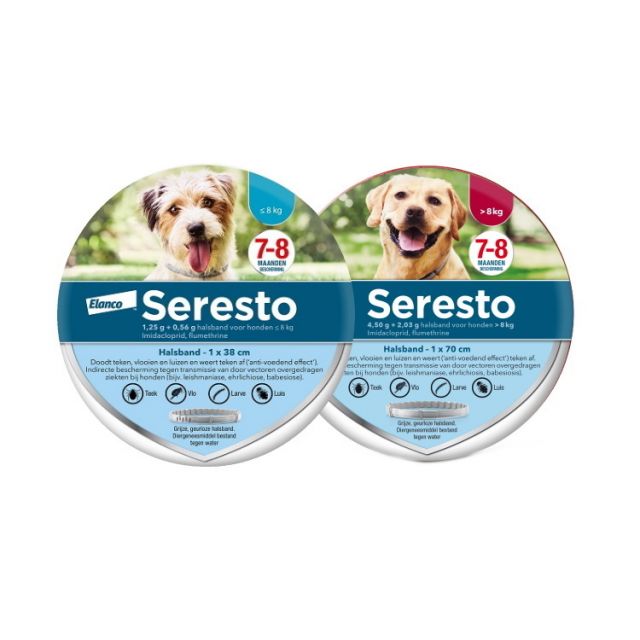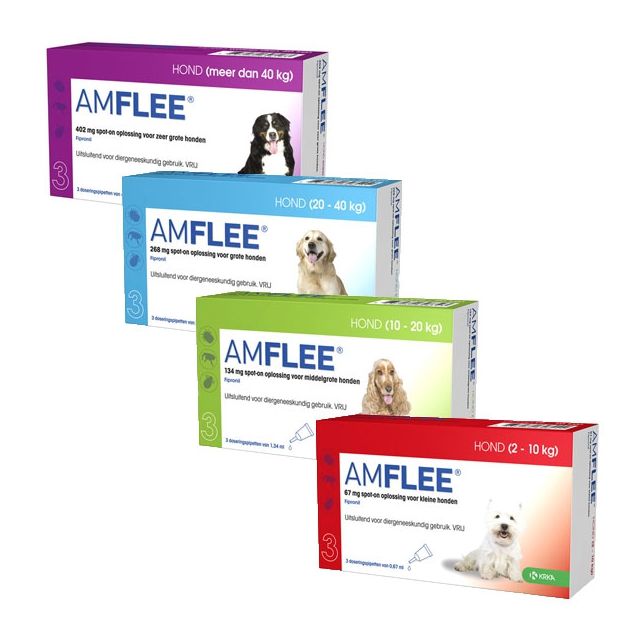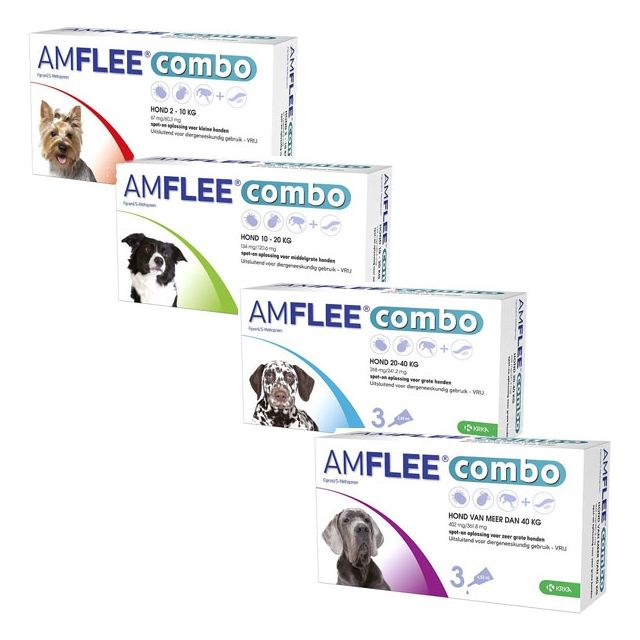Fleas in dogs
Fleas are widespread in our environment, both indoors and outdoors, and remain active throughout the year. Therefore, it's almost impossible to prevent your dog from coming into contact with them. When your dog experiences itching, scratching and biting itself, or has a hotspot, this may indicate a flea infestation. Also, sudden jumping, looking around, or running away "as if stung by a wasp" can be the result of a flea bite. When a flea bites a dog, a small amount of saliva enters the dog's skin. In some dogs, flea saliva causes a severe allergic reaction, resulting in extreme itching from just one flea bite, which is known as flea allergy. A severe flea infestation can even cause anemia. Fleas can also be the source of a tapeworm infestation in your dog. Pharmacy4pets helps you prevent or combat fleas in your dog.
The Flea Cycle
There are two types of fleas found in dogs: the dog flea and the cat flea. The nomenclature is very misleading because the most common type on dogs is the cat flea.
Fleas feed on the blood of your dog. They lay eggs in its fur, which then fall out and end up in the environment. Since most eggs are laid at night, the concentration is highest around your dog's resting place. The eggs hatch after one to several days. The larvae then hide in dark places, such as carpeting or crevices. They feed on house dust, skin flakes, and feces from adult fleas. After a while, the larvae "pupate" and can survive in their protected cocoon for months. Due to certain stimuli (such as heat, vibrations), adult fleas emerge from the cocoons and then seek out your dog for their blood meal and to lay eggs.
Flea Control in Dogs
The best way to check if your dog has fleas is by using a flea comb. Comb through the coat carefully, especially in areas where fleas like to reside (the base of the tail, armpits, and groin). This way, you can find adult fleas or flea dirt. You can identify fleas by their flattened appearance from the side. Additionally, they do not walk or fly but jump. Flea dirt looks like dark brown to black granules, often mistaken for sand. However, the difference is easily discernible by tapping the granules on a white sheet of paper and moistening them with a drop of water and rubbing them. Since flea dirt essentially consists of dried blood, it turns reddish-brown after moistening. Sand, on the other hand, will remain unchanged in structure and color.
Combatting Fleas in Dogs
If your dog has fleas, they can fortunately be treated effectively. However, fleas can be persistent, so a thorough approach is important! With a flea allergy, your dog only needs to be bitten by one flea every few weeks to experience itching. Therefore, it's essential to treat your dog monthly throughout the year to keep them itch-free. Pharmacy4pets offers various treatment methods so you can choose the one that best suits your dog.
Flea Drops
Using flea drops in pipettes or spot-ons is a quick and effective way to kill fleas. Advantage spot-ons kill fleas and lice on your dog. Vectra 3D also protects your dog against ticks, mosquitoes, and sandflies. Both products kill fleas quickly, are safe, and even suitable for dogs with flea allergies. After application, the flea drops remain active for about 4 weeks.
Flea Collar
A treatment method that works in the long term is the flea collar. The Seresto tick and flea collar protects your dog for up to 8 months against ticks and fleas. The collar also has a repellent effect against sandflies. When using the collar, contact with the skin of the active substances in the collar is very important. Therefore, the collar must be worn tightly enough to do its job effectively.
Tablets for Fleas
Tablets such as Frontpro and Adtab kill fleas and ticks quickly, safely, and effectively. Frontpro can also be used to combat puppy mange. The tablets should be administered every 4 to 5 weeks and can be given to puppies from 8 weeks of age with a minimum weight of 2 (Frontpro) or 1.3 (Adtab) kg, respectively.
Flea Spray
You can also protect your dog with flea spray. The spray from Frontline can even be used on very young puppies. The spray should be sprayed over the entire coat or distributed with a glove. Proper dosing (i.e., spraying frequently enough) is, of course, important for good efficacy. Unfortunately, resistance to fipronil, the active ingredient in products like Frontline, is increasing.
Natural Remedies for Fleas
Certain natural remedies, such as essential oils (e.g., citrus oil, peppermint oil, eucalyptus oil), and garlic are believed to have flea-repellent effects. However, the efficacy and safety of these products have not been demonstrated through scientific research, which is why these products cannot be registered as anti-parasitic products. Some active ingredients in these natural products have even been shown to be toxic to dogs. Therefore, the use of these remedies is not recommended.
Treating Fleas in the Home
Don't forget to treat your home in addition to treating your dog. Only 5% of fleas are on your dog. This means that up to 95% of fleas are in your environment. By treating your dog and your home simultaneously, you will gain faster control over the flea infestation. The best way to tackle the environment is by vacuuming thoroughly and using an environmental spray (also spray the vacuum bag after vacuuming!). If you have other pets like a cat, don't forget to treat them as well.
Note: If you have both a cat and a dog, it's important to know that cats cannot tolerate permethrin, a flea product that can be used fine in dogs. Permethrin is, for example, present in Advantix. A permethrin poisoning in cats leads to nerve symptoms. Flea products for dogs should not be used for cats as well. It's even safer to choose a product with a different active ingredient than permethrin for your dog if you also have a cat, especially if they have a lot of contact. If you have a question about fleas in your dog or about products from Pharmacy4Pets, please contact us.
| Flea Treatments | Administration | Duration of Action |
| Flea Drops | Apply the drops to your dog's skin with a pipette. | Up to 4 weeks |
| Flea Collar | The active ingredient spreads through the collar onto your dog's skin. | Up to 8 months |
| Tablets for Fleas | The flea ingests the active ingredient by biting the dog. | Up to 5 weeks |
| Flea Spray | Spray the liquid onto the fur from a distance of 10 to 20 centimeters and massage it in well. | Up to 3 months* *unfortunately often resistant |
| Natural Remedies | Effectiveness and safety not proven. | Effectiveness not proven. |

